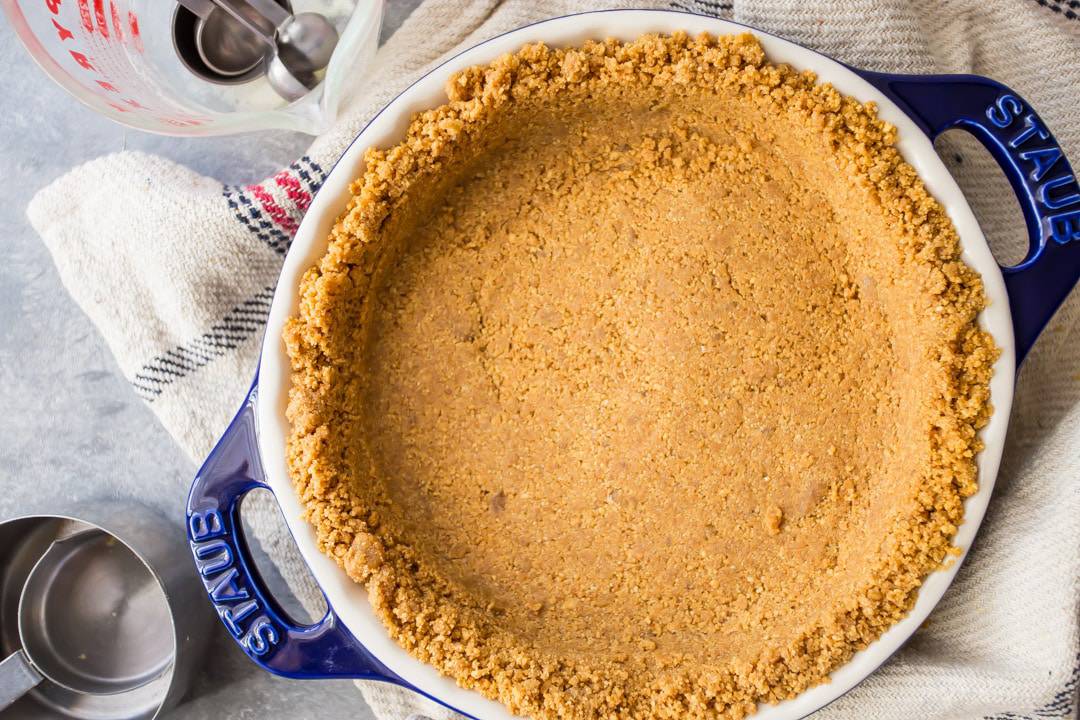How to Make a Graham Cracker Pie Crust

1-1/3 cups graham cracker crumbs (16-18 crackers)
1/3 cup soft butter or margarine
3 tbsp sugar
Use only crisp crackers. Roll into fine crumbs on waxed paper or in plastic bag, or crush crumbs in food mill or blender.
Combine and mix dry ingredients, then add butter which has been softened to room temperature. Don't melt the butter; the softened fat mixes more easily and evenly.
Blend all ingredients well with pastry blender, blending fork, or your hands.
Turn mixture into a 9" pie pan. Using a flat bottomed glass or custard cup, press firmly, making the bottom slightly thicker than the sides. Use the back of a tablespoon to pack crumbs firmly into angles of pan and firmly against sides of pan. Use hands to finish molding crust firmly around rim; make it slightly rounded and at least 1/4" thick for easier cutting and serving of pie.
Chill thoroughly before using. This crust may be baked in preheated moderate oven 350F for 8-10 minutes, which gives a firmer crust and is desirable if a cooked filling rather than an instant pudding or a gelatin filling is used. Chill the baked crust before filling.
Comments
Post a Comment